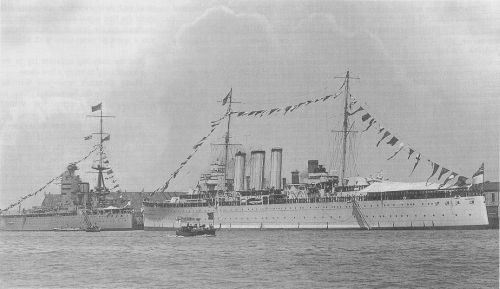- Author
- Royle, Guy, Admiral
- Subjects
- WWII operations
- Tags
-
- RAN Ships
- HMAS Australia II, HMAS Paluma II, HMAS Polaris, HMAS Poyang, HMAS Stella, HMAS Yunnan, HMAS Benalla I, ML310, RFA Bishopdale, HMAS Warrego II, HMAS Colac, HMAS Broome, HMAS Arunta I, HMAS Katoomba, HMAS Lithgow, HMAS Ballarat I, HMAS Barcoo, HMAS Warrnambool I, HMAS Bendigo I, HMAS Hobart I, HMAS Canberra I, HMAS Manoora I, HMAS Kanimbla I, HMAS Westralia I, HMAS Warramunga I, HMAS Vendetta I, HMAS Shropshire, HMAS Stuart I, HMAS Gascoyne I
- Publication
- March 2001 edition of the Naval Historical Review (all rights reserved)
Benalla joined the survey group in Leyte on 4 November and remained on station for three uncomfortable weeks.
Lingayen Gulf
The end of November found TF74 back at Manus but by 26 December we again sailed for Leyte. Gascoyne and Warrego also set course for Leyte. There the support force assembled for a landing at Lingayen Gulf on 9 January and consisted of 6 battleships, 12 escort carriers, 8 cruisers, 46 destroyers and small craft, and sailed from Leyte on 3 Jan and steamed through a now calm Surigao Strait.
On 5 January Gascoyne and Warrego were in action against Japanese destroyers. On the same day Arunta was damaged by a Kamikaze, with 2 killed. Australia also suffered her first Kamikaze attack of the operation, with 25 killed and 30 wounded.
From 6-8 January the bombardment force was in Lingayen Gulf to soften up enemy positions before the landing on the 9th. During this period there were heavy air raids on the whole force. On 6 January Australia was struck by another Kamikaze resulting in 14 killed and 2 wounded. Shropshire was attacked a number of times and in one was saved by Gascoyne shooting down the aircraft – we were indeed the lucky ship, but we also had very effective air defence.
On 8 January Australia suffered her 3rd and 4th Kamikaze strikes – fortunately with only minor casualties. Whilst all this was going on, Gascoyne and the hydrographic group laid buoys marking the lanes to the landing beaches.
On 9 January during the landings heavy air attacks continued and at 1300 Australia was hit for the 5th time, damaging the foremast funnel. The gallant ship continued effective fire support for the landings, where once again Kanimbla, Westralia and Manoora made a major contribution. At the end of the day the damaged Australia was sailed for Manus and return to Sydney. On departure Admiral Oldendorf signalled –
“Your gallant conduct and that of your ship has been an inspiration to all of us. Sorry to lose you at this time. “
Corregidor
The next operation for Shropshire, Arunta and Warramunga was at the assault on Corregidor on 16 February. Manila fell on 4 March.
Shropshire returned to Manus in early March, then back to Sydney.
The flag of Commodore Farncomb had been transferred to Hobart, who with Arunta, Warramunga, Warrego, Gascoyne, Benalla and ML310 continued to support mopping-up operations to complete the liberation of the Philippines.
Conditions in the Service
Before closing it is necessary to recall the conditions under which we served, though all veterans here will have their own vivid memories. There was no general air conditioning in ships to counter the everlasting heat and humidity in latitudes close to the equator – work and rest was difficult and we all raise our hats to engine room and boiler room crews in all ships.
Food was generally of a very poor standard, which was not the fault of the cooks. Mail, which was a key element to help maintain morale, arrived sometimes with weeks and weeks between deliveries.
Looking back it is almost unbelievable that the supply organisation could not have provided better and more frequent support. The number of supply ships was inadequate but we readily acknowledge the fine support by the Yunnan, Poyang, Merkur and the tanker Bishopdale.
Obviously I have left out many details in this brief address, but I hope I have reviewed events in an important but almost forgotten part of our naval history. Now it is possibly difficult to believe that we went through those tough operations.
We may tend to remember the good times and the humourous situations at our reunions, but at the same time we will never forget those of our mates who didn’t come back and those who have passed on since from the effects of their war service.
The role of the RAN in the liberation of the Philippines is indeed a proud and important phase of our naval history.





